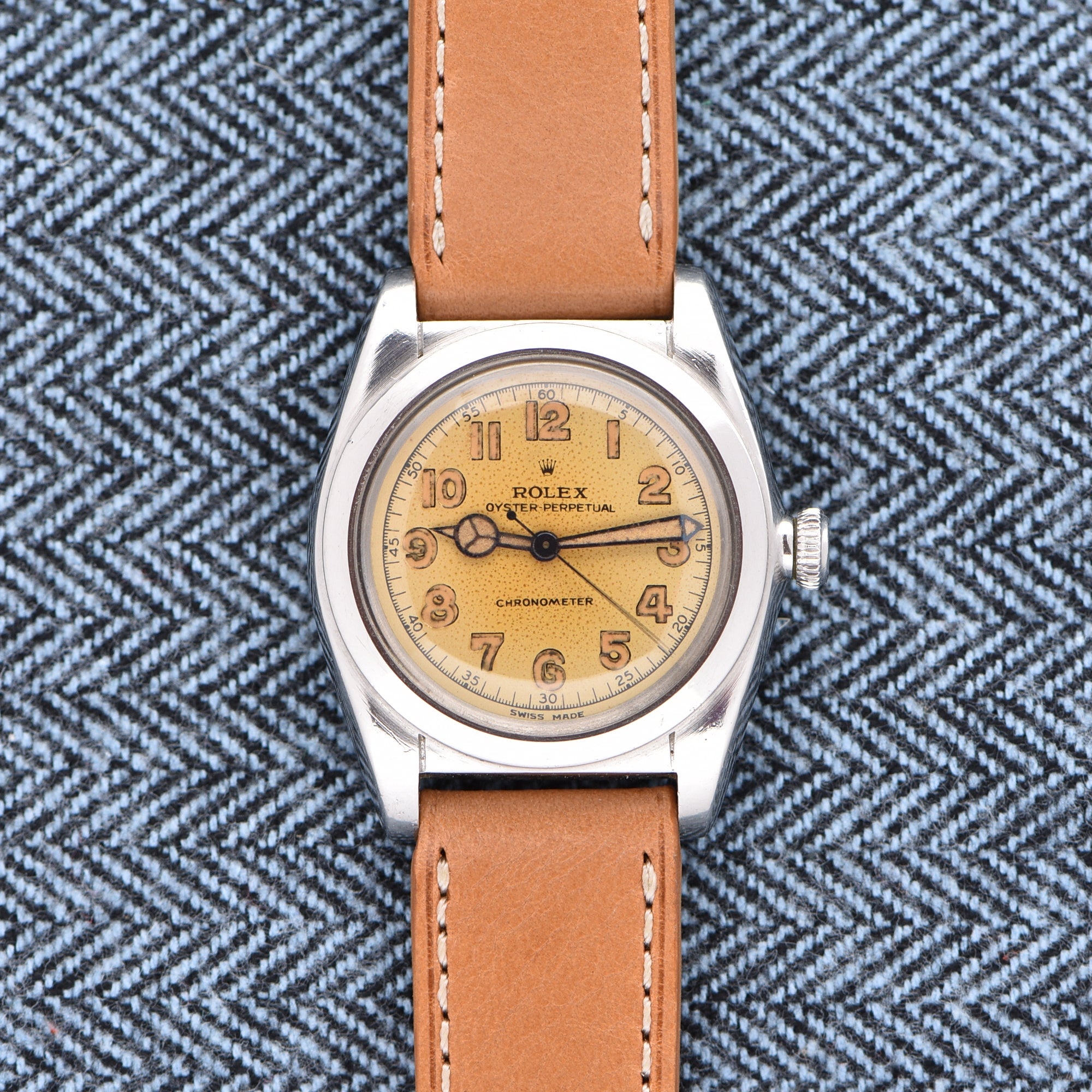
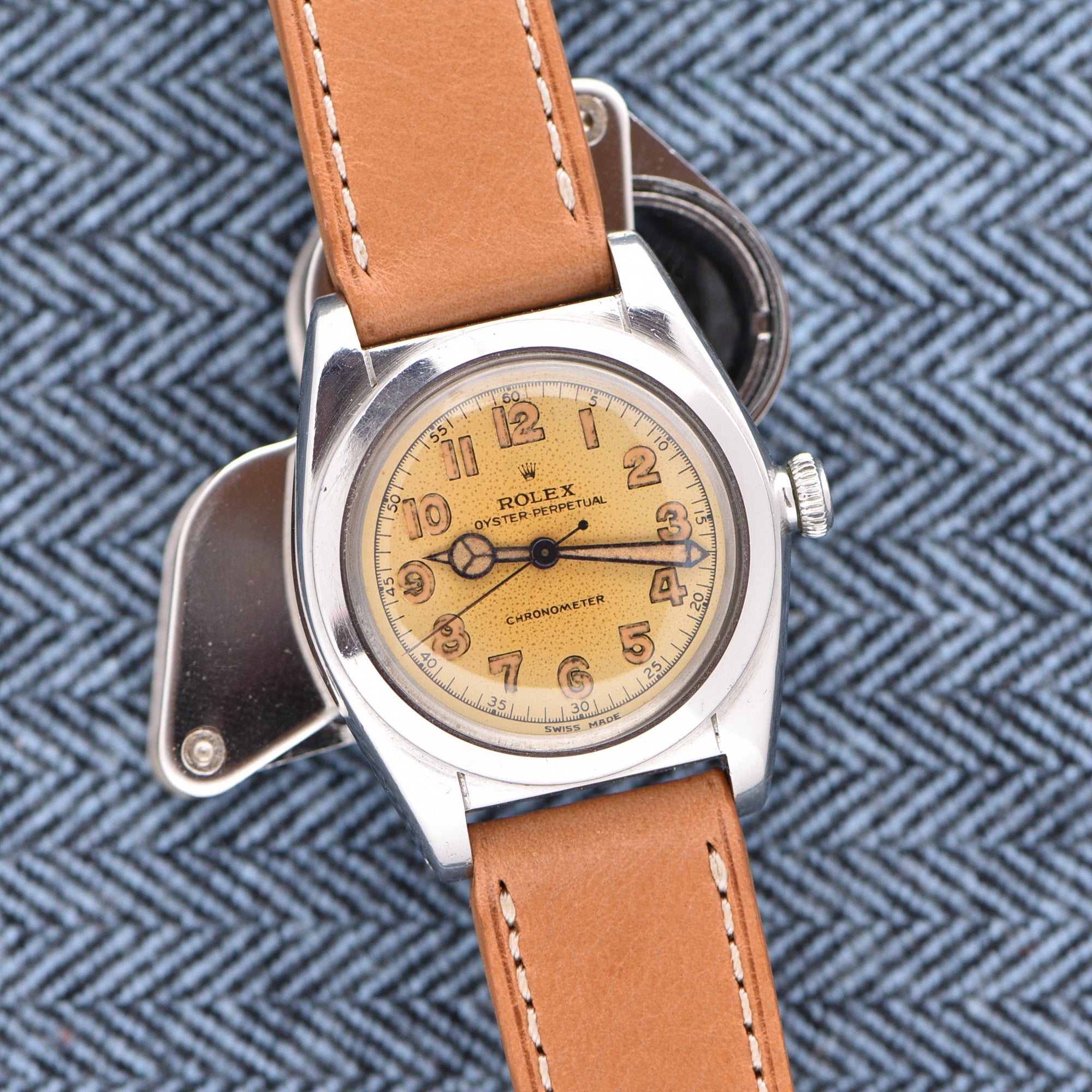
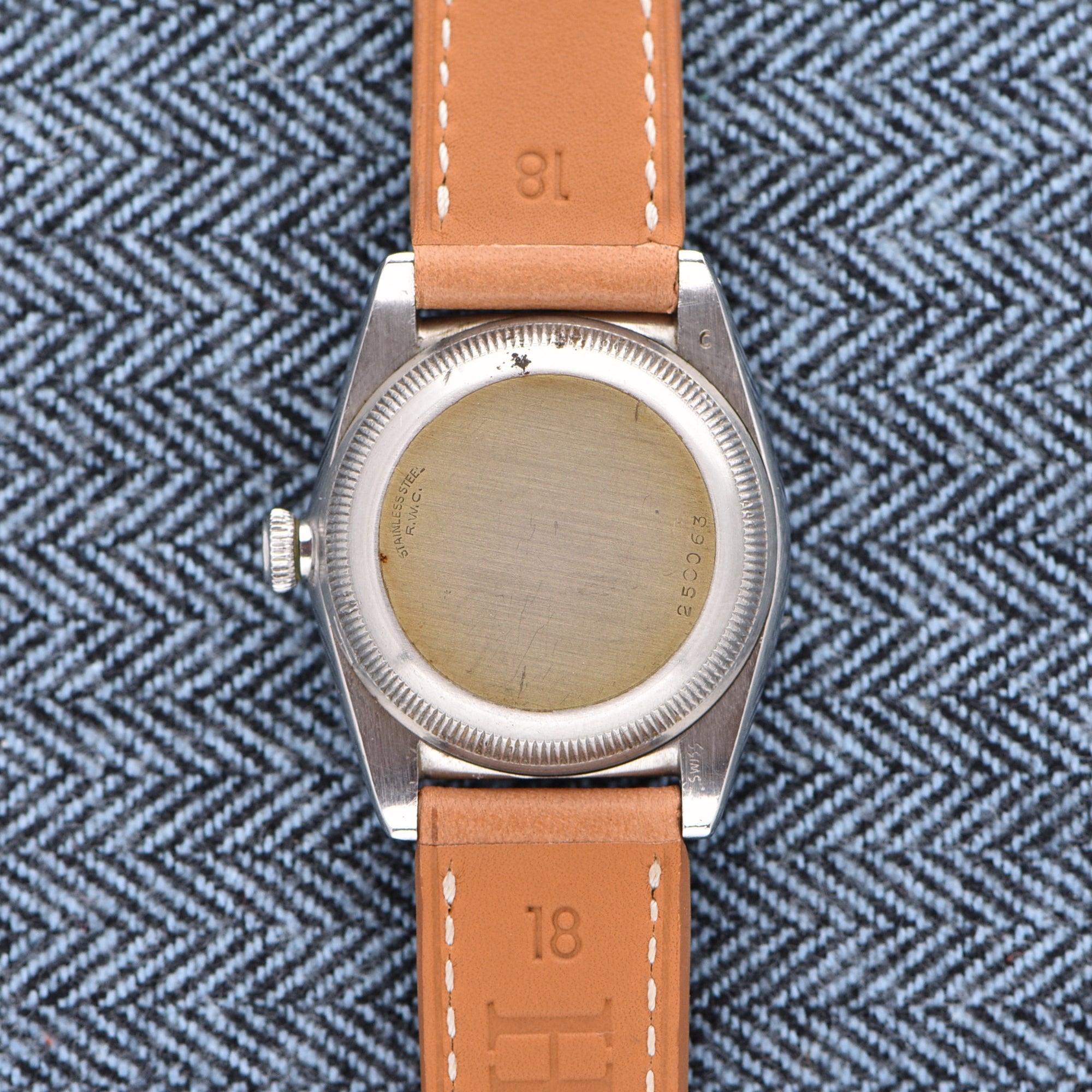
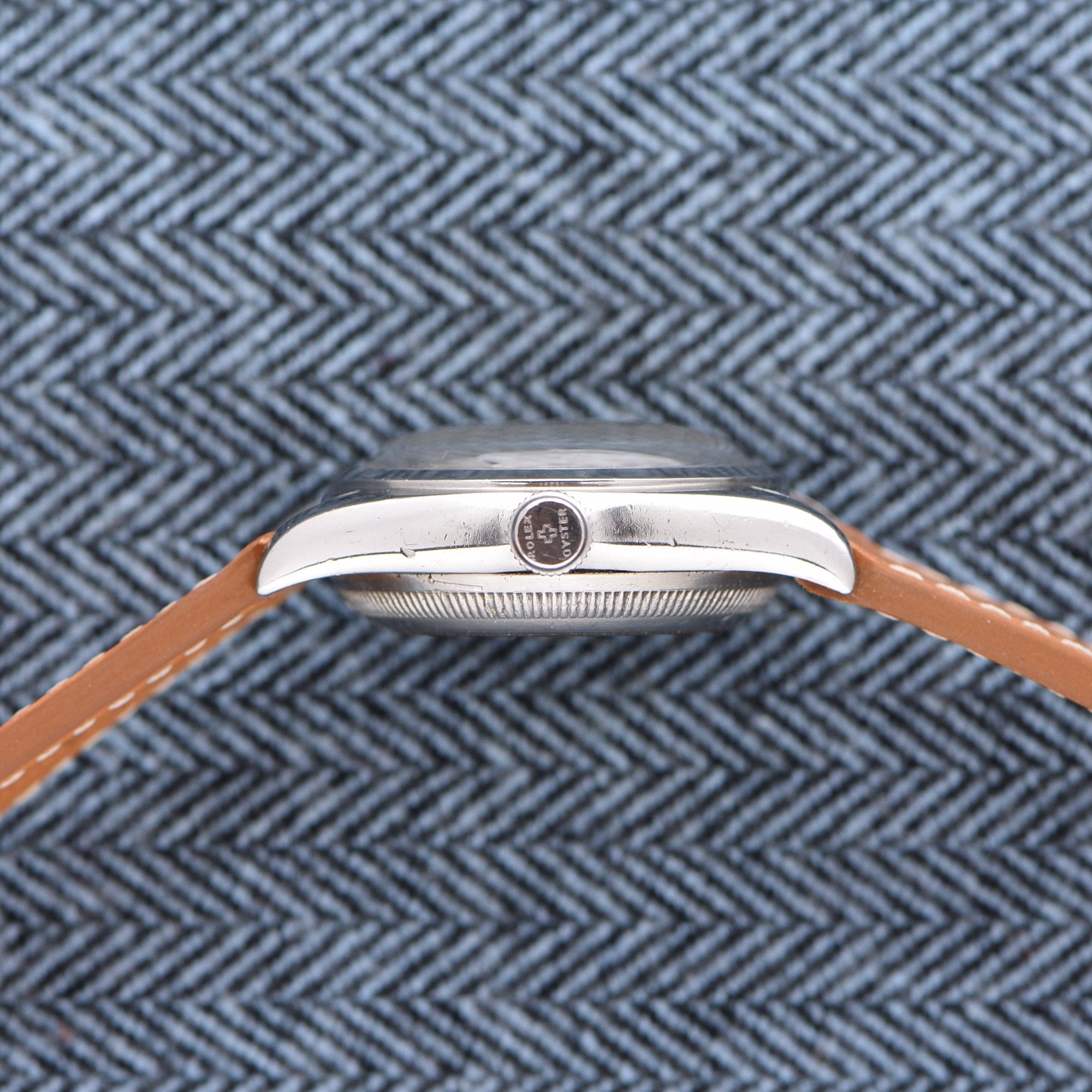
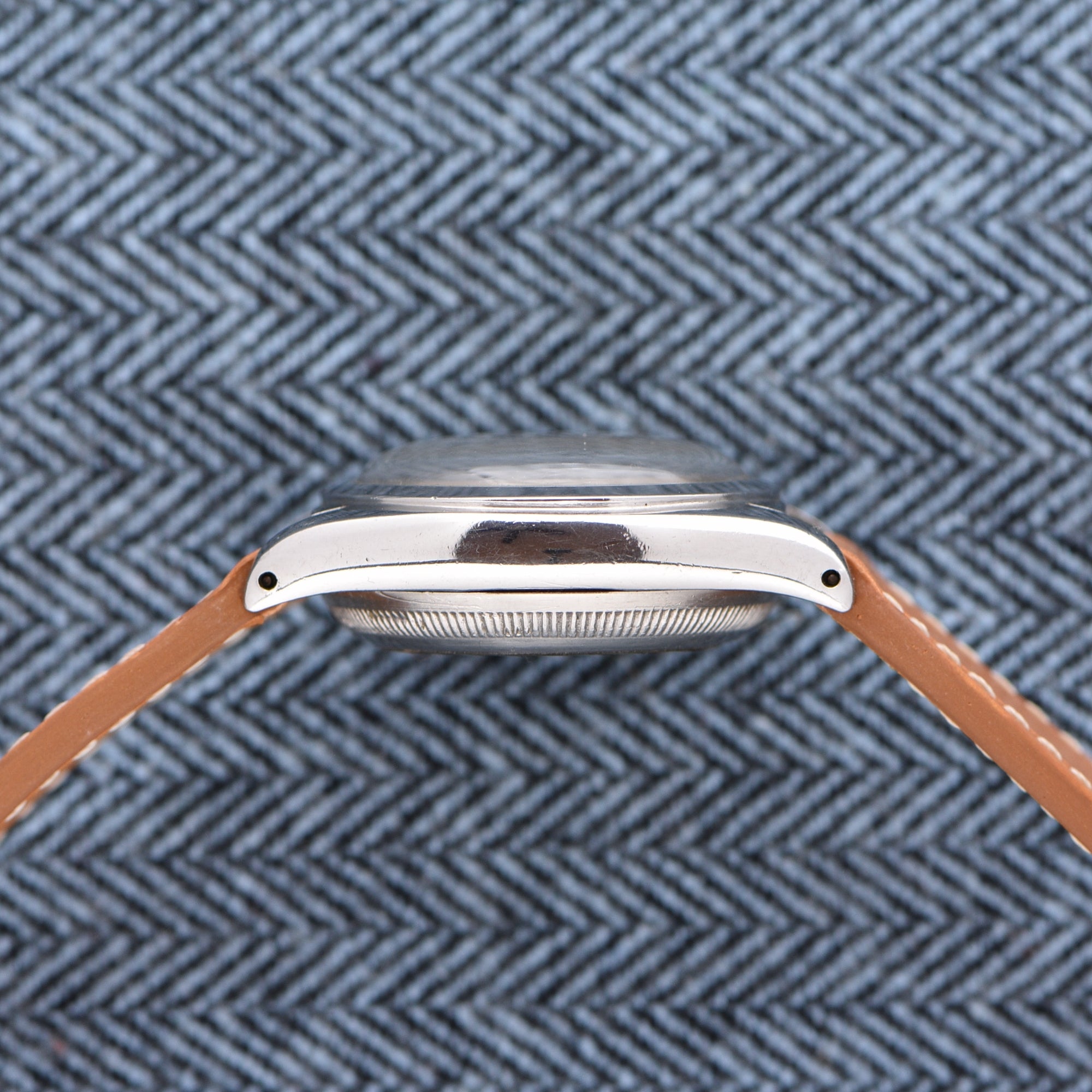
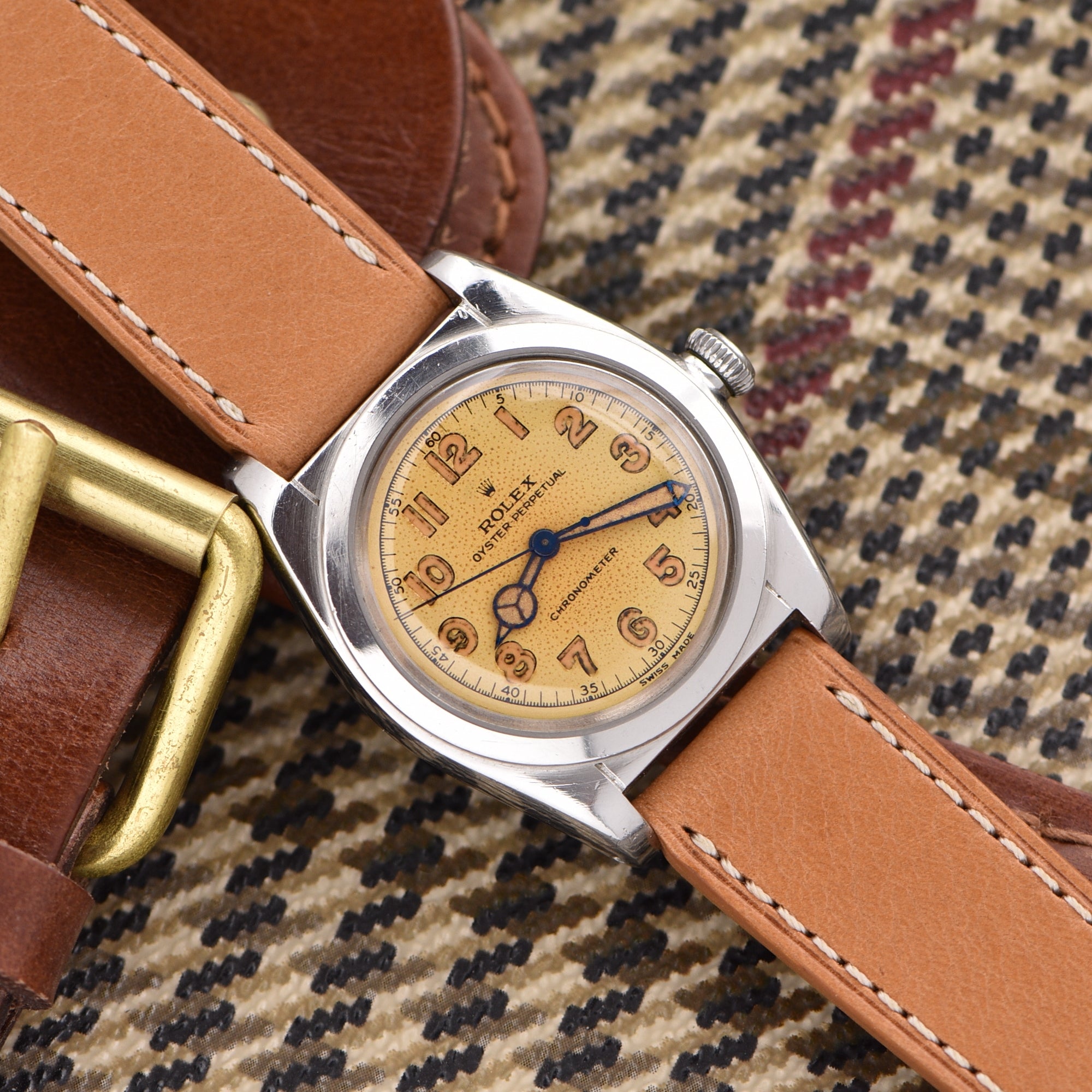
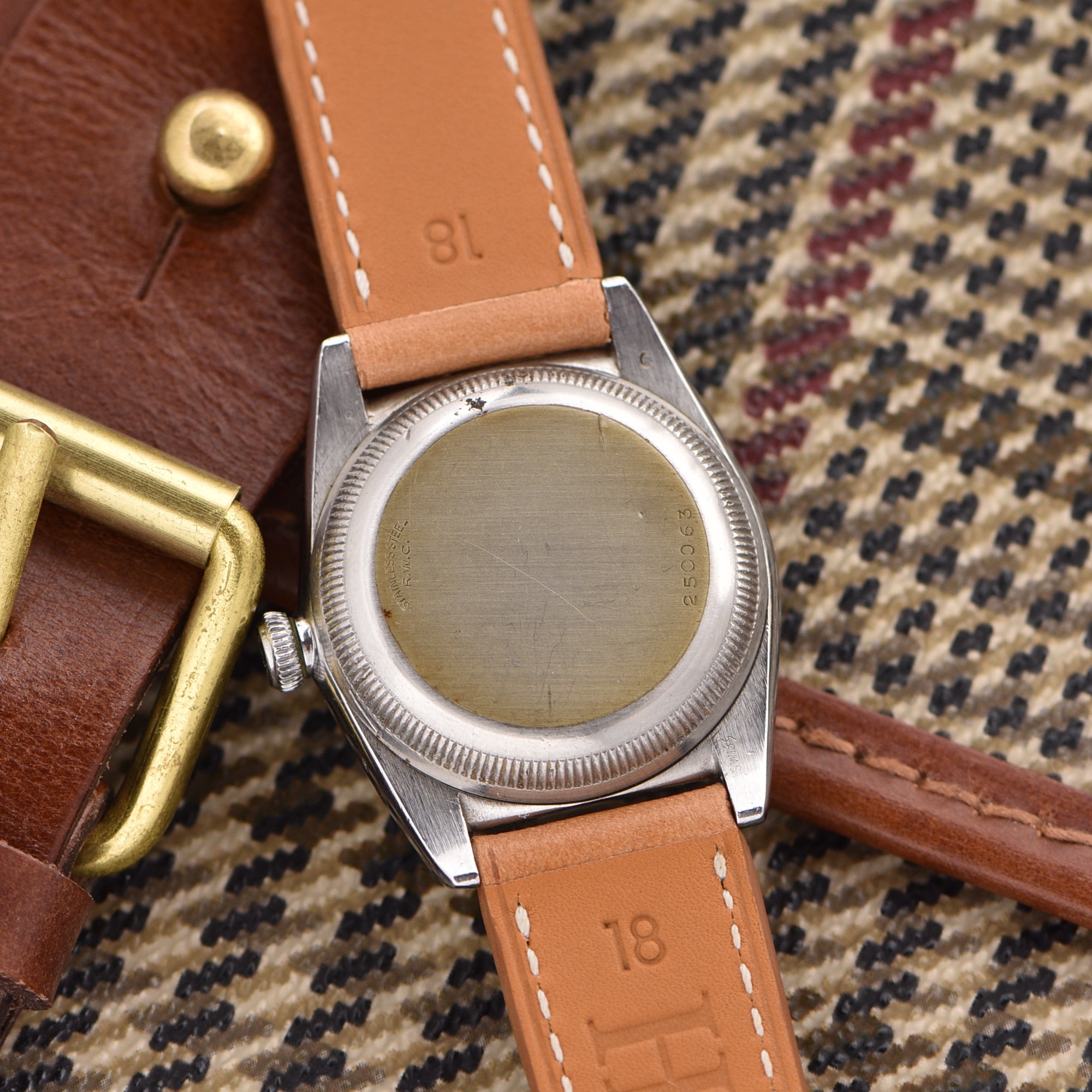

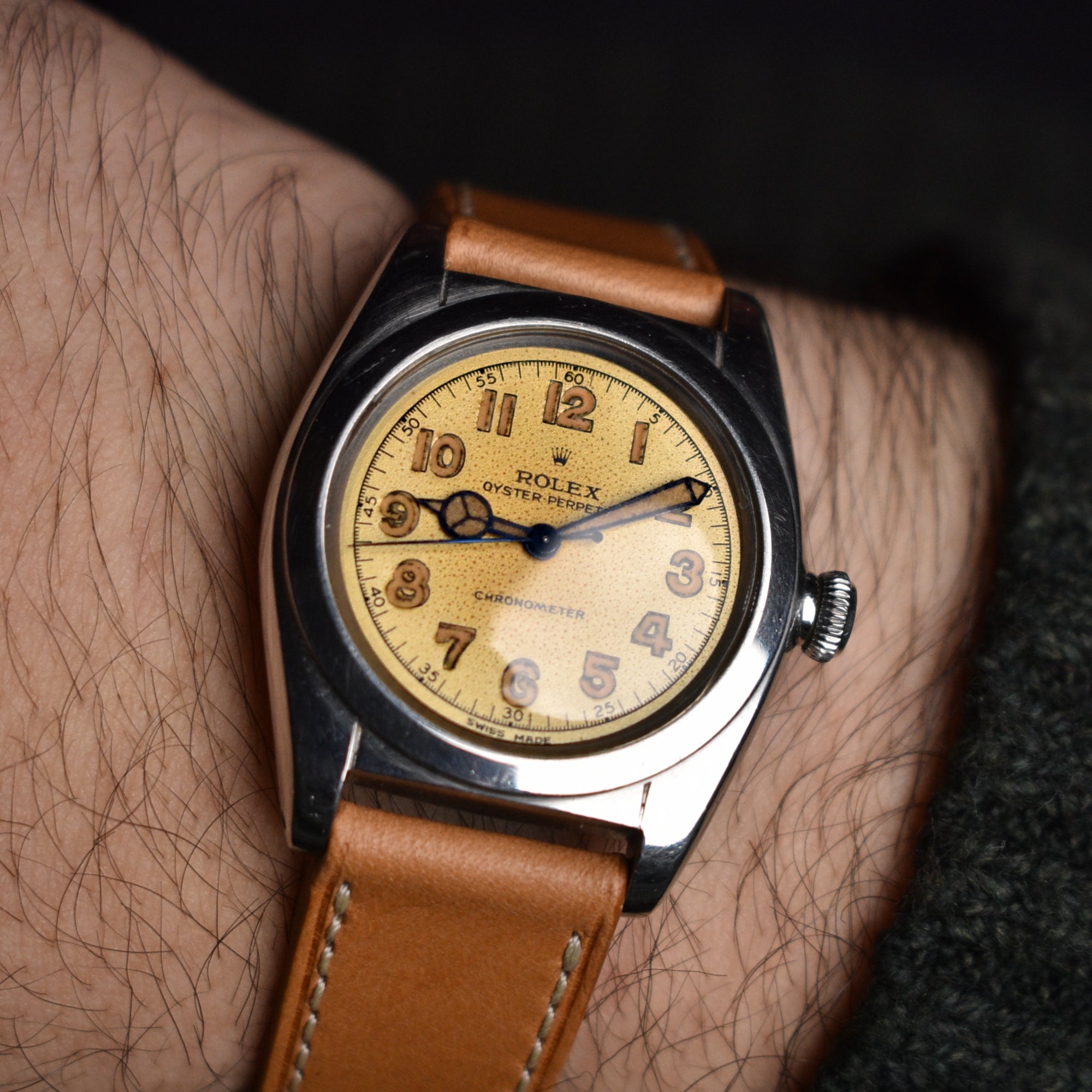
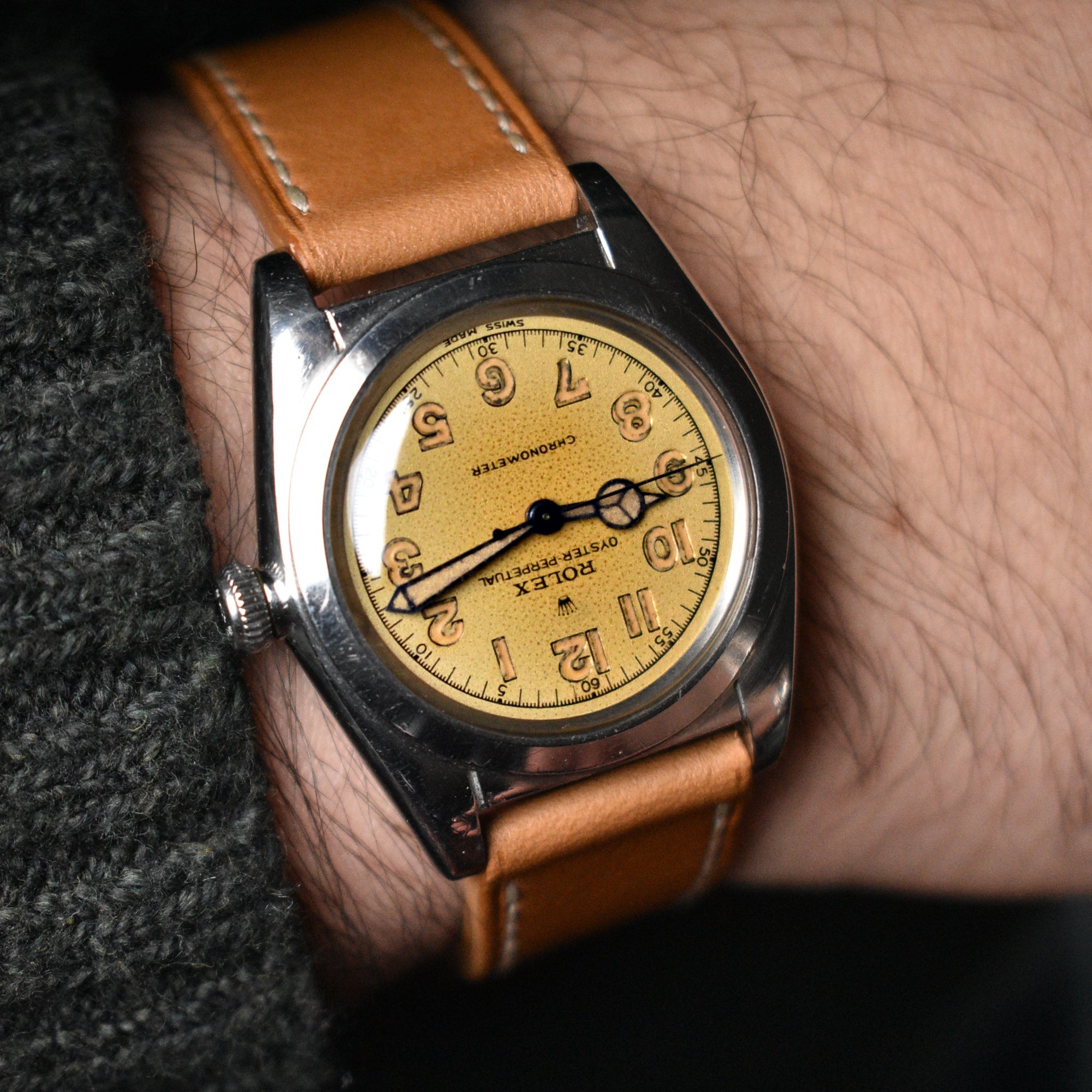
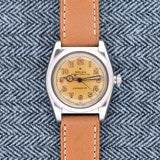
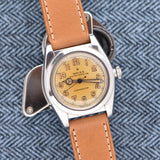
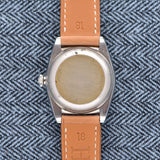
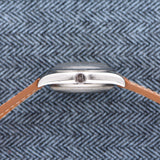
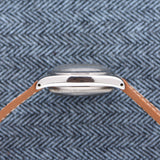
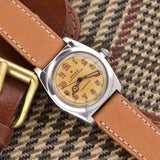
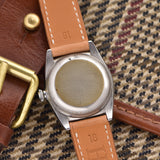
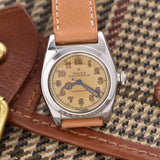
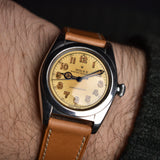
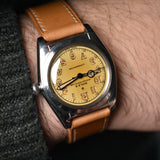
1943 Rolex Bubbleback - WW2 Era
- Reference 2940
- Watch Only
- Wire Price: $3,800
- Specifications
- The Story
- The Brand
Year: 1943
Model: 2940
Case Diameter: 30mm
Lug to Lug: 38mm
Case: Stainless steel
Condition: No significant wear as seen
Dial: Golden Patina
Movement: Automatic
Condition
The case is in fantastic condition, with the original case back still intact, we suspect that this watch is unpolished. The dial has turned into a crisp golden color with beautiful speckling. The blued hands have all their lume intact and look great. The watch is paired with our Italian watch strap and steel buckle.
The Bubble Back category, manufactured between 1933 and 1955, is a vintage Rolex watch known for its rounded, protruding case-backs. The design was born out of necessity to house Rolex's thicker, self-winding movements. In the 1930s, Rolex began fitting their watches with automatic movements, which increased the overall thickness of the movement and required additional clearance for the rotor to move freely inside the case. Instead of making the entire case larger, Rolex allowed the case back to protrude in a curved, bubble-shaped fashion.
The reference 2940 was introduced in the 40s and featured a handful of different dial and hand configurations. The one we have here comes from the WW2 Era with large blued hands and a very unique dial. The dial, which has gained a very cool speckled patina, features hour markers that are actually engraved into the dial and then filled with lume.
Wilsdorf & Davis was initially a watch importer, but by 1908, Wilsdorf had registered 'Rolex' as a trademark. The name was chosen after trial and error, with some believing it was taken from the phrase 'horological Excellence' or because the word sounds like a watch being wound. Wilsdorf was aware of the power of branding and began a long campaign to get the new company name on the watches he exported. The relationship between Rolex and Aegler started the same year that Wilsdorf & Davis set up the business, placing the largest order for wristwatches ever seen. Wilsdorf was attracted by Aegler's commitment to the highest quality, as their movements were extremely accurate and small. In 1910, one of Rolex's models won a First Class Chronometer Certificate from the rating office in Bienne, Switzerland, and in 1914, another piece became the first ever wristwatch to be granted a Class A Chronometer Certificate from the Kew Observatory in England, the only non-marine timepiece to ever achieve it. The firm of Wilsdorf & Davis became synonymous with a commitment to uncompromising excellence.
WWI in 1914 led to the rebranding of Wilsdorf & Davis as Rolex in 1915. The British government imposed a 33.3% tax on luxury goods, forcing Rolex to relocate to Bienne. Despite the war, the wristwatch proved its utility, as it was used by soldiers during combat and in the field. Rolex produced trench watches, using Aegler's small movements for wearability. By the end of the war, wristwatches became a utilitarian accessory for men. In the years between the wars, Rolex asserted its independence, partnering with Carl F. Bucherer to resist the Federation of Swiss Watch Manufacturers. In 1926, Rolex introduced the Oyster case, making wristwatches waterproof, dustproof, and robust. Wilsdorf capitalized on this innovation by installing Rolex Ambassadors, or 'Testimonies', with celebrities as a marketing masterstroke.
During WWII, Switzerland retained its neutrality, meaning that it was one of the few countries not forced to shut down watch manufacturing to supply the war effort. As a result, by the end of hostilities, the Swiss watch industry was way ahead of other nations. Rolex truly came of age in the 1950s by launching some of the most enduring legends in watchmaking, such as the Explorer, Submariner, GMT-Master, Day-Date, and Milgauss.
The quartz crisis of the 1970s and 80s forced the company to change tactics but ultimately repositioned itself as the purveyor of the ultimate luxury lifestyle. Today, the name Rolex is synonymous with refinement, opulence, and personal accomplishment. The Rolex brand as we know it today is the byproduct of an unrelenting drive for excellence and over a hundred years of refinement and development, all in pursuit of the brand’s singular goal of making the world’s best wristwatch.
1943 Rolex Bubbleback - WW2 Era
Authenticity Guaranteed
All our watches are carefully inspected to insure the authenticity of the watch
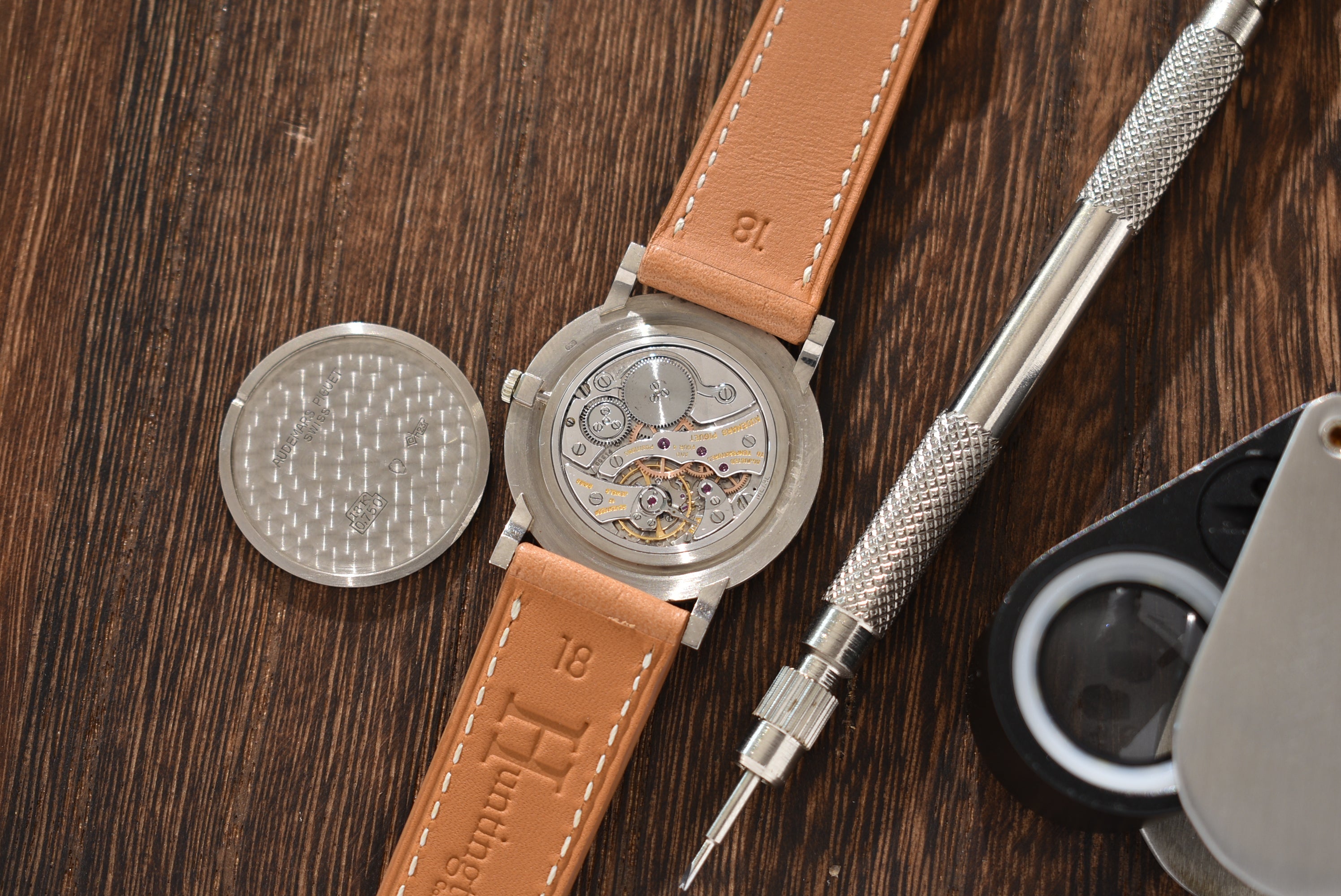
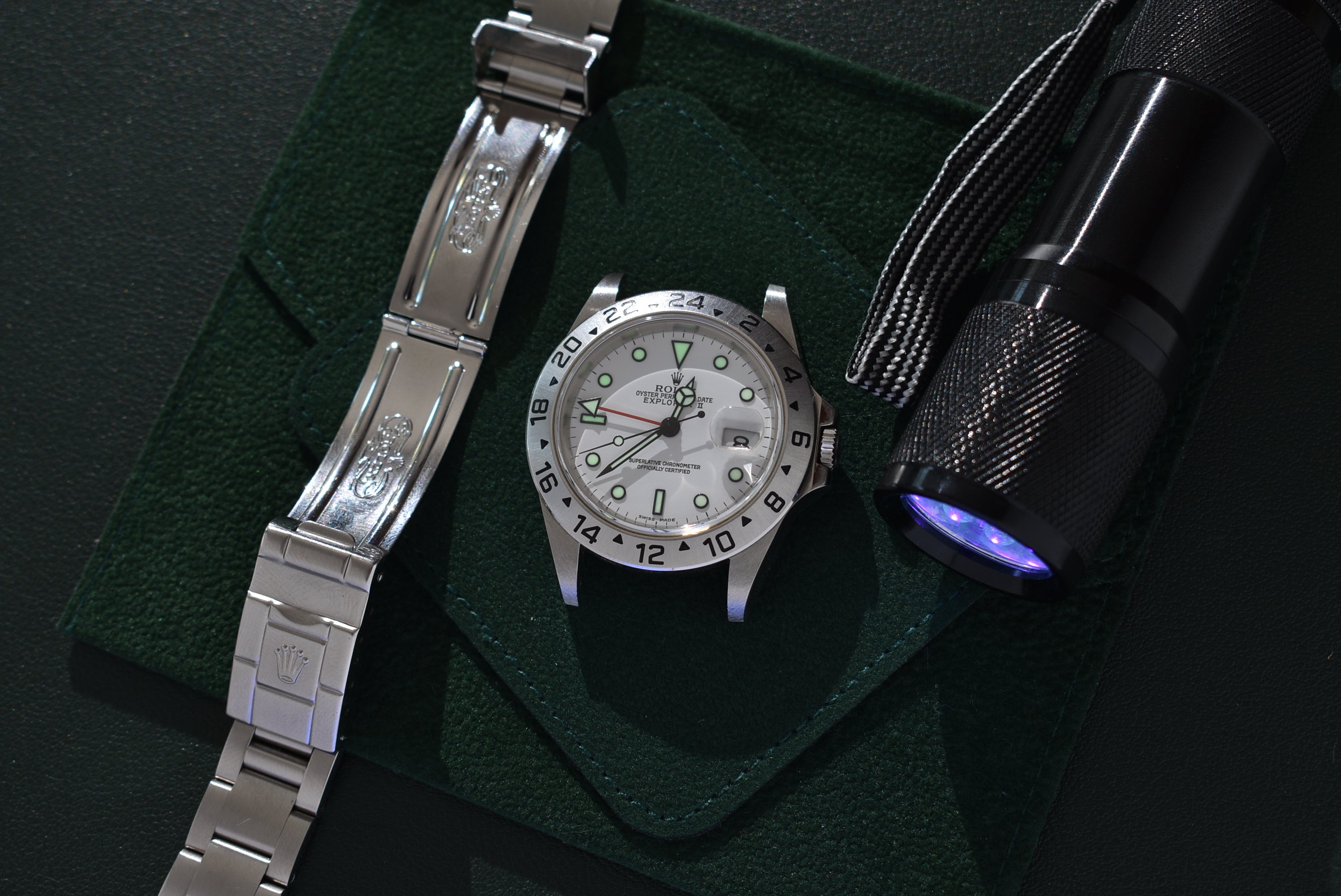
The Details
All our watches are scrutinized during inspection to make sure our descriptions are as accurate as possible.
- Related products
- Recently viewed
